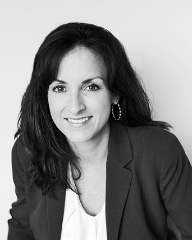Interview by Cecily Garber
Jen Cort is an independent consultant on issues of equity, diversity and inclusion as well as advisory program redesign and development.

Independent Consultant
Net Assets: This past spring, independent schools, like other sectors of the U.S., have faced a reckoning with experiences of Black Americans and other minority groups on campus, who have expressed pain, anger, disappointment and frustration with racist behavior. Your job is to work with schools on issues of diversity, equity, inclusion and justice. Did the movement this summer surprise you?
Jen Cort: Sadly, no. Schools are now hearing from Black, Indigenous, People of Color (BIPOC) alumni and alumni parents and teachers who had real and, too often, unaddressed experiences. While schools have focused on inclusion, meaning welcoming people to campus, we may have neglected focusing on belonging, or ensuring that everyone can be their authentic selves in school. Even when schools acknowledged the presence of these complaints and sought to address such matters, they might not have checked in to ask if the way of addressing the concern worked in a restorative manner.
Knowing that racism impacts everyone, I am not surprised to hear from white students too that they feel ill-prepared for and did not receive skill sets for talking about race. Schools have an obligation to give students language and strategies for having conversations, so they can engage, rather than avoid.
Net Assets: What have you heard from schools in terms of their responses?
Cort: I’ve heard a range of responses. On one end of the spectrum, schools are not responding or being defensive by sending out a letter listing all the efforts the school has made. On the other end, many schools have held deep listening sessions with alumni without giving a defense or explanation. They're just listening and then gleaning from what was heard to inform their work. At one school, a head of school made a video saying, “We hear you, we apologize,” and at another, the board sent a letter saying, “We didn't get it before, but we do now, and here's what we're going to do,” outlining concrete plans.
Where schools really need to be thoughtful and mindful is when making statements, such as “Black Lives Matter,” or “BIPOC Lives Matter.” Those need to be backed up in programming, hiring, retention, admissions language and decision-making. Many alumni, alumni parents and current parents and students are saying, "I see the apology, I see the acknowledgement, I see the awareness, and now I'm waiting to see what you do with it.” So, we are in this very tender, vulnerable time where some community members and schools have opened themselves up, and those openings have to be addressed through creating sustainable and systemic change.
Net Assets: So what can the business office in particular do to be part of the systemic change?
Cort: Diversity, equity and inclusion work focuses on structural and systemic growth. I work with school leaders to address the systems of the school which hold inequity in place while being mindful that most people are not trying to hold inequity in place. That means every part of the school can have an impact.
I work with school leaders to address the systems of the school which hold inequity in place while being mindful that most people are not trying to hold inequity in place. That means every part of the school can have an impact.
Facilities, for example, might research the values of the school’s vendors to determine if they align with the school’s values, ultimately to ensure the money the school spends reflects the school’s values.
Technology directors might help in two ways. First is ensuring access to devices and that parents have the knowledge they need to help their kids. Second is confronting the question of turning the cameras on and exposing students, parents and faculty to parts of their identity which are private, such as socioeconomic status, religion, political values and more. As technology directors think through the lens of equity, they can help create virtual screens.
The school can also consider town-gown or community relations. My local public-school district drove school buses to neighborhoods where some students lacked internet access, so that they could have Wi-Fi hotspots. Perhaps independent schools with buses could support local public schools to support those efforts. It would strengthen the whole community and keep people employed while also getting the independent school’s name out in a different place and a different way.
Net Assets: I get the sense that some staff members might think, “This is an academic or programs thing.” What might you say to them?
Cort: Every one of us contributes to the education of our students. Students see us on campus and parents interact with us. For example, a parent may decide to withdraw from the school because the person (not a teacher) on the other end of the phone demonstrates a lack of equity awareness. I'm also thinking about the time when a senior in high school told me that he always walked to his classroom through a particular building on campus because one of the people who worked in that office was Black. Those moments were the only time he saw someone who looked like him on campus.
We are always in relationships with people, even those we do not know. When we're in a school, we're in relationship with our students at all times — when giving tours, creating communications, posting pictures, calling families for donations, collecting tuition and more. I have heard from some young alumni, for example, that their school has communicated with them far more about the annual fund than the school’s work on equity, and that bothers them. We need need to consider that once somebody is our student, they remain a part of our communities forever, and then the question is how we can live that as a value.
When people who are not in teaching positions see themselves as part of the relationship and the retention of our students and faculty, the school’s students, faculty and parents all benefit.
In no way do I want to monetize equity work, but it is a fact that independent schools are financially dependent on tuition. We also know from research that employees of color often leave our schools within three years. Losing students and running searches is expensive, both financially and timewise. Even more important, trauma is an expense no school wants to impart to a member of the community. When people who are not in teaching positions see themselves as part of the relationship and the retention of our students and faculty, the school’s students, faculty and parents all benefit.
Net Assets: What might be a positive outcome of conversations about racism on campus?
Cort: Many schools have one or more traditions which are culturally insensitive at best and are known problematic areas, but schools haven’t removed them for fear of upsetting constituencies such as alumni families. Take a play about early American history, for example, with uneven and biased representations. I imagine people in the business offices have heard comments such as, “I'm giving funding to the school because I loved when I did this play when I was little,” as well as the opposite point of view: “I'm not giving money to the annual fund this year because I saw that play, and I can't believe you all are supporting that.” We have an opportunity to reassess all traditions and put them in alignment with our school’s values. The business office can make a list of feedback relating to equity and meet with administration to share what has been heard.
The business office might need language to probe potential issues of inequity, and I encourage school leaders to consider how business office staff might receive professional development in addition to teachers.
Net Assets: Could you pick out one difficult part of these efforts and provide a strategy to tackle it?
We need to learn how to make mistakes better. Too often the response to people expressing pain is to defend, explain or cite numbers of the students of color, families of color, etc. enrolled in the school.
Cort: We need to learn how to make mistakes better. Too often the response to people expressing pain is to defend, explain or cite numbers of the students of color, families of color, etc. enrolled in the school. I think schools are having a hard time saying, "We have been part of the structure of this country and we have an obligation to do better." Schools and individuals might consider that if they've made a mistake, it's not about them; it's about experience of the person to whom the harm was done. We need to simply listen and take it in.
A model I developed to help address mistake making is the 6 Rs:
- Recognize a mistake was made.
- Receive the feedback as a gift to do better.
- Reflect on what you need to learn and ensure your learning is reflected in your actions.
- Realize it's not about us.
- Resist making it about us.
- Remember that if individuals and institutions choose not to react because of fear or discomfort that it is an assertion of privilege to not engage in these conversations.
Feeling guilty doesn’t help. The brain struggles to learn when feeling shame and guilt. And schools don’t need to act like they’ve got it all figured out either, because that’s not true.
But the big thing now is if schools don't show that they're learning going forward, if they don't reflect that they're working on this, that's when we're going to cause more harm. It creates distrust to state, “We hear you, we are working on it and we care,” and then not change the system. That causes additional pain. For greater sustainability, focus equity work through different positions rather than specific people. That way, the school will continue its equity work no matter who is in the varying roles.
Schools are well served to ask the questions: “How do we respond to mistakes?”, “What does diversity, inequity, inclusion and injustice mean at our school?” and “How do we have conversations around topics that are difficult for us?” That could mean conversations about race, politics, gender identity and more. To create sustainable and systemic growth we need to expand capacity and capability and be able to tackle any number of questions as opposed to the few that are most pressing at the moment.
Cecily Garber is the editor of Net Assets and NBOA's senior director, communications.
Download a PDF of this article.



.png?sfvrsn=e0147111_1)

